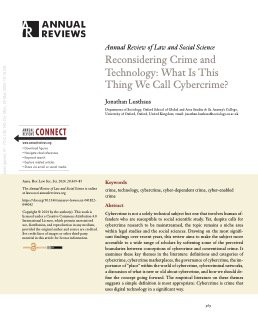By Joe Caluori, Violette Gadenne, Elen Kirk, and Beth Mooney
The National Crime Agency published its first intelligence assessment of county lines in 2015. Ever since, there has been a growing interest in county lines from the media, public policy, and the world of research. Crest Advisory has published research that has contributed to the body of evidence, among other things, on the socio-economic determinants of individual vulnerability to exploitation, shining light on ways to mitigate those risks. This project, however, takes a different approach, by honing in on the specific role played by technology in county lines. In this report, ‘technology’ is used to refer to electronic or digital devices or services predominantly those used for personal communication. By including devices and services in our definition we incorporate both physical hardware such as mobile phones or smartwatches, and software such as applications provided by social media platforms. Technology plays an ever-increasingly important role in our day-to-day lives. Data from the Office for National Statistics (ONS) show that the proportion of adults who use the internet daily has increased from 35 percent of the UK population in 2006 to 89 percent in 2020. The nature of this usage has also changed dramatically, with social media increasing in influence significantly over the years. In 2021 TikTok, a social media platform designed for sharing short videos, overtook Google for the first time as the most popular site worldwide.5 Just as modern technologies are now an essential aspect of modern society, technology is intrinsic to the county lines model. The mobile phone, or the ‘line’ it facilitates, enables communications between those running the lines, those distributing the drugs, and those buying and using the drugs. Current approaches to disrupting county lines rely heavily on mobile communications technology (e.g. cell site analysis, or digital forensics gained from burner phones, personal smartphones, or other digital devices). However, the role of technology as an enabler of child criminal exploitation (CCE) is both under-represented and poorly understood in published research and literature. The Government has announced an intention to “cut the head off the snake” of county 6 lines. To understand what is required to do this, it is necessary to explore the dynamics of the country lines model, as well as examine its weaknesses. There is an acute need to better understand and monitor technological evolutions within county lines and analyze their implications for CCE. Only by understanding and responding to the role of technology can the Government and law enforcement leaders produce an effective national plan to ‘cut the head off the snake’ of county lines. Recent public policy developments have put the role technology plays in enabling crime in sharp focus. Social media and online platforms have seen perhaps the most dramatic rise in interest. Even though at the time this report is being drafted, the Online Safety Bill has been put on hold, much ink has been spilled on its value, its potential impact on privacy, and what should be included in such legislation. High-profile cases, such as the events leading to the 6th January attack on the United States Capitol in 2021, have shown the potential harm that can be caused by online communication. More generally, as we become more and more dependent on tech for all aspects of our lives, it is crucial that law enforcement keeps pace with its development concerning crime
London: Crest Advisory, 2022. 37p.











